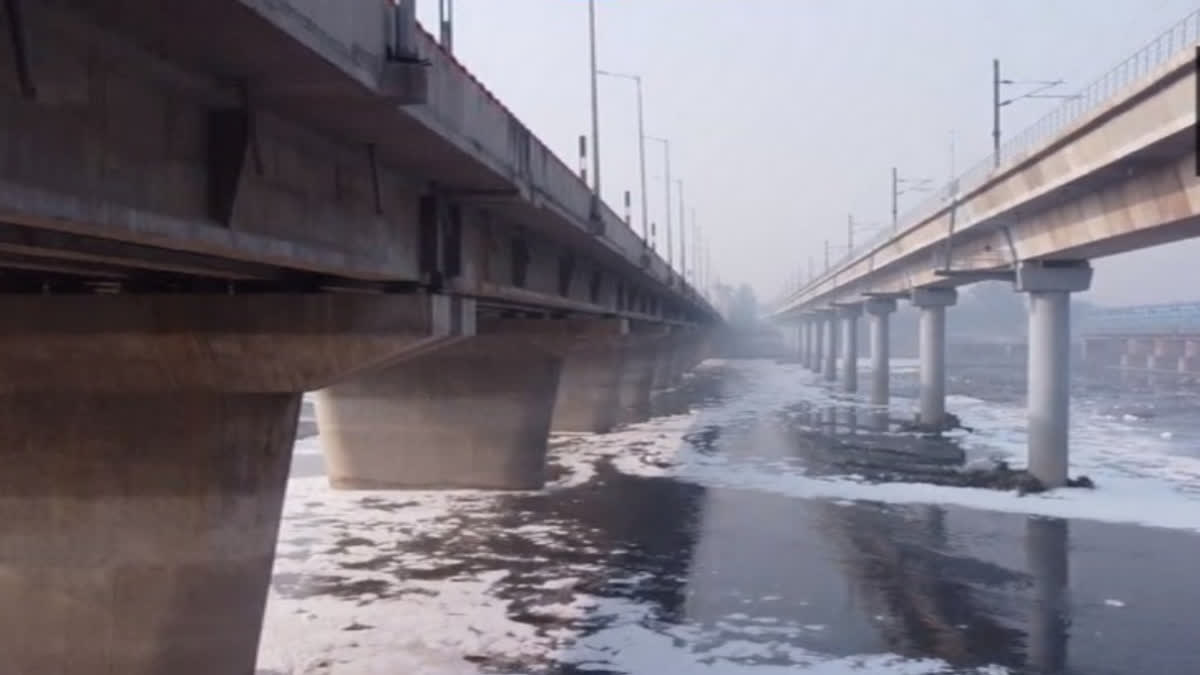New Delhi: Having missed the December 2023 deadline to treat all the sewage generated in the city, a crucial step towards cleaning the Yamuna, the Delhi government now strives to achieve the target by March this year, according to a new report prepared by the Delhi Pollution Control Committee (DPCC). The delay means that cleaning the Yamuna to bathing standards by February 2025, a key promise made by the AAP government, has proven to be more challenging than the government had expected.
According to the report presented on January 10 before the High-Level Committee on Yamuna Rejuvenation, set up by the National Green Tribunal, Delhi has increased its sewage treatment capacity by 35 million gallons a day since January 2023. The city generates 792 million gallons a day (MGD) of sewage, only 667 MGD of which can be technically treated by the 37 Sewage Treatment Plants, or STPs, set up in the capital.
At present, these STPs utilise only 71 per cent of their installed capacity, treating only 565 MGD of the 792 MGD sewage, with the rest flowing into the Yamuna river untreated. Only 237 MGD of the treated wastewater meets the prescribed standards, according to which, BOD (biological oxygen demand) and TSS (total suspended solids) in the treated wastewater should be less than 10 milligrams per litre.
BOD, an essential parameter for assessing water quality, is the amount of oxygen required by aerobic microorganisms to decompose organic material present in a water body. BOD levels less than 3 milligrams per litre are considered good. The Delhi government had previously set a target of treating 100 per cent of sewage generated in the capital to the prescribed standards by December.
It aimed to increase Delhi's sewage treatment capacity to 814 MGD by December 2023 and 965 MGD by June 2024 to accommodate the expected future increase in sewage generation. According to the Delhi Jal Board's estimates, the capital will be generating 925 MGD of sewage (80 per cent of 1,156 MGD water supply) by 2025.
The deadline to achieve the treatment capacity of 965 MGD has now been extended to March 2025. The 22-kilometre stretch of the Yamuna between Wazirabad and Okhla in Delhi, which is less than 2 per cent of the entire river length, accounts for around 80 percent of its pollution load. Untapped wastewater from unauthorised colonies and jhuggi-jhopri clusters, along with the poor quality of treated wastewater discharged from sewage treatment plants and common effluent treatment plants (CETPs), is the main reason behind high pollution levels in the river.
The river can be considered fit for bathing if BOD is less than 3 milligrams per litre and dissolved oxygen (DO) is greater than 5 milligrams per litre. The NGT-constituted committee has identified seven major action points to rejuvenate the river.
These are 100 per cent treatment of all sewage generated in the capital, trapping of all drains, connecting all 1,799 unauthorised colonies and 639 jhuggi-jhopri clusters to the sewer network, 100 per cent industrial effluent management by 13 CETPs, faecal sludge management, removing encroachment from the river floodplains, and effective utilization of treated wastewater.
Read More



